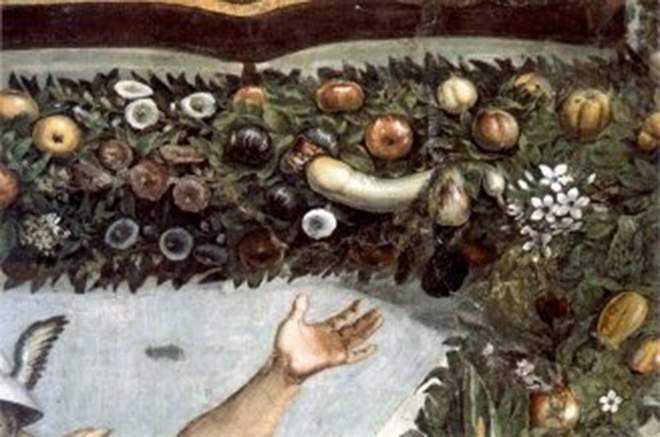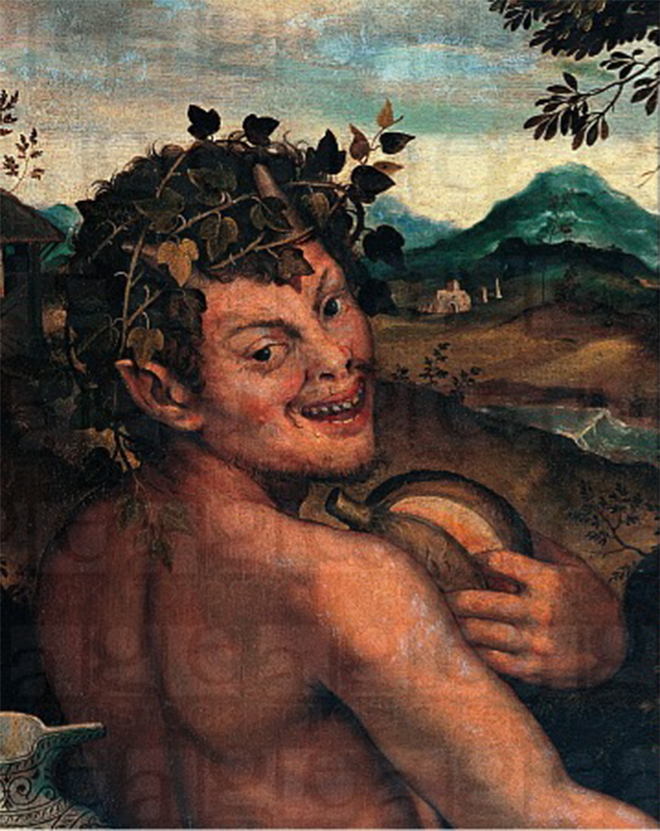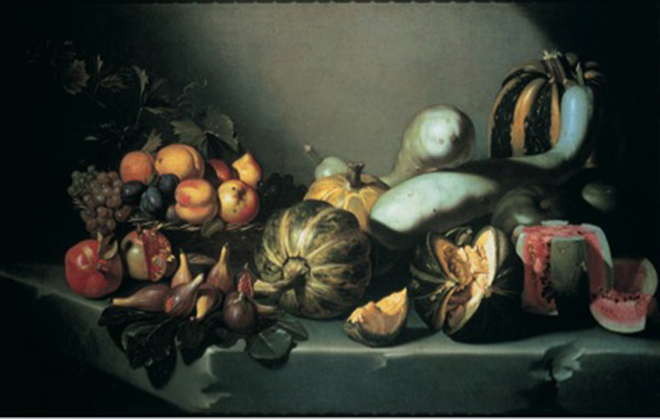Anyone who thinks Cormac McCarthy lacks a sense of humor—much less a sense of history—should read a few dozen pages into his masterpiece Suttree and note what the runaway adolescent Gene Harrogate accomplishes in a Tennessee melon patch. McCarthy, who has produced some of the darkest fiction in modern literary history, turns lasciviously whimsical:
He knelt in the rich and steaming earth, his nostrils filled with the winey smell of ruptured melons. To steal upon them where they lay, his hand on their warm ripe shapes, his pocketknife open. He lifted one, a pale jade underbelly turning up. He pulled it between his knees and sank the blade of his knife into its nether end. He shucked off the straps of his overalls. His pale shanks kneeling in a pool of denim.
In the next scene a farmer walks through his patch of assaulted melons and remarks to a friend, “You ain’t gonna believe this…. Somebody has been fuckin my watermelons.” Asked about the age of the melon-mounter, the farmer says, “I don’t know how young he was but he was as active a feller as I’ve seen in a good while.” He adds, “He’s damn near screwed the whole patch.”
The event—which lands Harrogate in the clinker—establishes the opportunistic nature of literary fiction’s most compelling trickster since Huck Finn. At the same time, it points to the erotic frisson that fruits and vegetables uncannily evoke. Harrogate’s botanical violation is one of the more bizarre moments in modern literary fiction, but it taps a playful smorgasbord of arousal dating back to the Italian Renaissance.
Visual correlations between the human body and botanical life are so readily obvious that it would have been strange had someone not produced an official compendium of the phenomenon.
WRITING IN THE FOOD journal Gastronomica, the art historian John Varriano documents the early arc of this scintillating past. He explains that, “the erotic associations of figs, peaches, melons, and squash was particularly common in the era that began with Raphael (1483–1520) and ended with Caravaggio (1571–1610).”
Raphael, an acknowledged “icon of lust,” was indeed responsible for painting a sexually suggestive still life involving edible plants. Called Cupid and Psyche, it raised royal eyebrows when it premiered in 1518 and continues to do so today. Varriano describes the relevant scene—situated on the periphery of a much larger painting—as “classical iconography with a coarse and lusty wit.” Or you could put it this way: It’s a fig dangling like a scrotum underneath a priapic squash. In case anyone missed the association, a hand reaches out to grasp the distended arrangement.

Another image from the period brings us closer to the Harrogate philosophy of fruit affection. The painting, Niccolo Frangipane’s Allegory of Autumn, features a satyr running his finger down the glistening seam of a split melon (while, just to keep things polymorphous, stroking a sausage). The Satyr, with his left eye eerily fixed on the viewer, grins with creepy sensuality, much in the way you’d imagine Harrogate’s expression as he gets to business in his own ripened patch of pleasure.

Visual correlations between the human body and botanical life are so readily obvious that it would have been strange had someone not produced an official compendium of the phenomenon. Hence Italian philosopher Giambattista della Porta’s Phytognomica, published in 1588. This lavish volume illustrated the similarities between several fruits and vegetables and corresponding human organs. Carravaggio then took the eroticized fruit trend to its logical conclusion in the early 16th century with his Still Life With Fruit on a Stone Ledge. In it, he pushed humans out of the frame altogether and fixed upon an unmolested orgy of produce. Varriano calls the painting “undeniably sexy.”

And then, according to Varriano, all the fun came to end. Post-Reformation Rome might have been an ideal incubator for salacious imagery, but the retrograde spirit of restraint that accompanied the global rise of Puritanism, Methodism, republicanism, Victorianism, and Cold War conventionalism choked off any serious high-art forays into sexual hedonism.
The Western world had to wait until the 1960s—and more so, the ’70s—for artists to breath temporary life into melon lust. McCarthy published Suttree in 1979. One could say that Harrogate, that deviant devil, brought us directly back to the Italian Renaissance.
But it was an ephemeral evocation of the past. Today, as Walter Benjamin predicted would happen in “The Work of Art in the Age of Mechanical Production,” the eroticization of plant life has become yet another ritualistic art victimized by a technology—in this case the Internet—which admits of no authenticity and cheapens nearly everything it touches. If you prefer to cling to the delusion that people are generally semi-normal, I’d advise absolutely not doing a Google search involving any combination of the terms “melon,” “erotic,” and “sex.”
With the possible exception of this site, dedicated with some gravitas to the erotic’s presence in nature, the only worthy discovery from such “research” was a musical composition on erotic fruits and vegetables by Jack Black’s Tenacious D. Black and Kyle Gass go on “a freaky pursuit” for some “low hanging fruit” and end up doing a lot of campy dancing. It’s kind of a brilliant song, and even more brilliantly performed.
But, in the end, Tenacious D’s act, hilarious though it might be, is a dying gesture. Even Harrogate knew that the best fruit wasn’t low hanging. It was already on the ground. And, after many centuries culminating in the rise of real people filming themselves having real sex with real melons on YouTube, it turns out to be a rotten mess.




